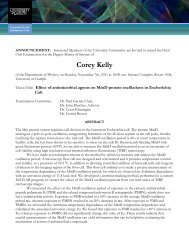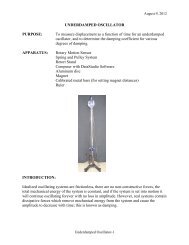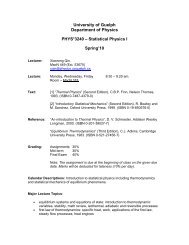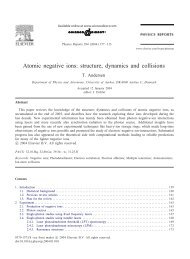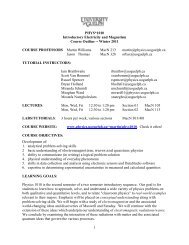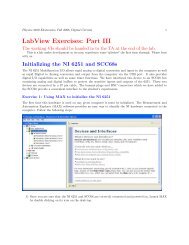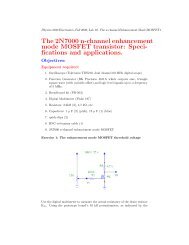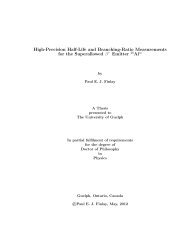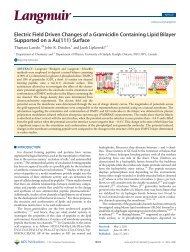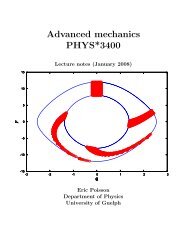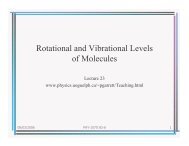Geant4 Simulations for the Radon Electric Dipole Moment Search at
Geant4 Simulations for the Radon Electric Dipole Moment Search at
Geant4 Simulations for the Radon Electric Dipole Moment Search at
You also want an ePaper? Increase the reach of your titles
YUMPU automatically turns print PDFs into web optimized ePapers that Google loves.
a measurement cell. The RnEDM experiment will implant a beam of Rn ions (likely<br />
221 Rn or 223 Rn) into a thin foil loc<strong>at</strong>ed in <strong>the</strong> target chamber. The collected Rn<br />
<strong>at</strong>oms are <strong>the</strong>n transferred into <strong>the</strong> measurement cell via <strong>the</strong> transfer chamber using<br />
techniques discussed in <strong>the</strong> following section.<br />
2.2.1 Transferring Radioactive Noble Gas Isotopes<br />
Theprocessoftransferringradioactivenoblegasisotopeson-linetoameasurement<br />
cellhasbeenshowntobesuccessful <strong>at</strong>TRIUMF[26]. Aprototypenoblegascollection<br />
appar<strong>at</strong>us, shown inFigure2.2, wastestedwith 120 Xeasbeamsofradonisotopeswere<br />
not available <strong>at</strong> <strong>the</strong> time of <strong>the</strong> tests. The 120 Xe isotope was chosen due its half-life of<br />
40 minutes, comparable to <strong>the</strong> roughly 25 minute half-lives of 221 Rn and 223 Rn. An<br />
initial beam of 120 Cs produced <strong>the</strong> 120 Xe isotopes through β decay; <strong>the</strong> decay chain<br />
is shown in Equ<strong>at</strong>ion 2.2. The beam was implanted in a thin zirconium foil <strong>for</strong> about<br />
two 120 Xe half-lives, after which <strong>the</strong> remaining 120 Cs <strong>at</strong>oms were given roughly 10<br />
minutes to decay into 120 Xe.<br />
120 Cs(64 s) → 120 Xe(40 m) → 120 I(81 m) → 120 Te(stable) . (2.2)<br />
Valve V1 was closed to separ<strong>at</strong>e <strong>the</strong> target chamber from <strong>the</strong> beam line. He<strong>at</strong>ing <strong>the</strong><br />
zirconium foil to about 1350 K released <strong>the</strong> xenon <strong>at</strong>oms into <strong>the</strong> target chamber volume.<br />
Opening<strong>the</strong>V2valveallowed<strong>the</strong>xenongastodiffuseinto<strong>the</strong>transferchamber,<br />
where <strong>the</strong> xenon <strong>at</strong>oms froze onto a pre-cooled coldfinger. After cryopumping, <strong>the</strong><br />
V2 valve was closed and V3 to <strong>the</strong> cell was opened while simultaneously warming <strong>the</strong><br />
coldfinger to release <strong>the</strong> xenon gas. Once <strong>the</strong> coldfinger was warmed, <strong>the</strong> V4 valve<br />
was opened which released a ballest volume of N 2 gas into <strong>the</strong> transfer chamber. The<br />
N 2 gas expanded and pushed <strong>the</strong> xenon gas into <strong>the</strong> measurement cell. The V3 valve<br />
15



